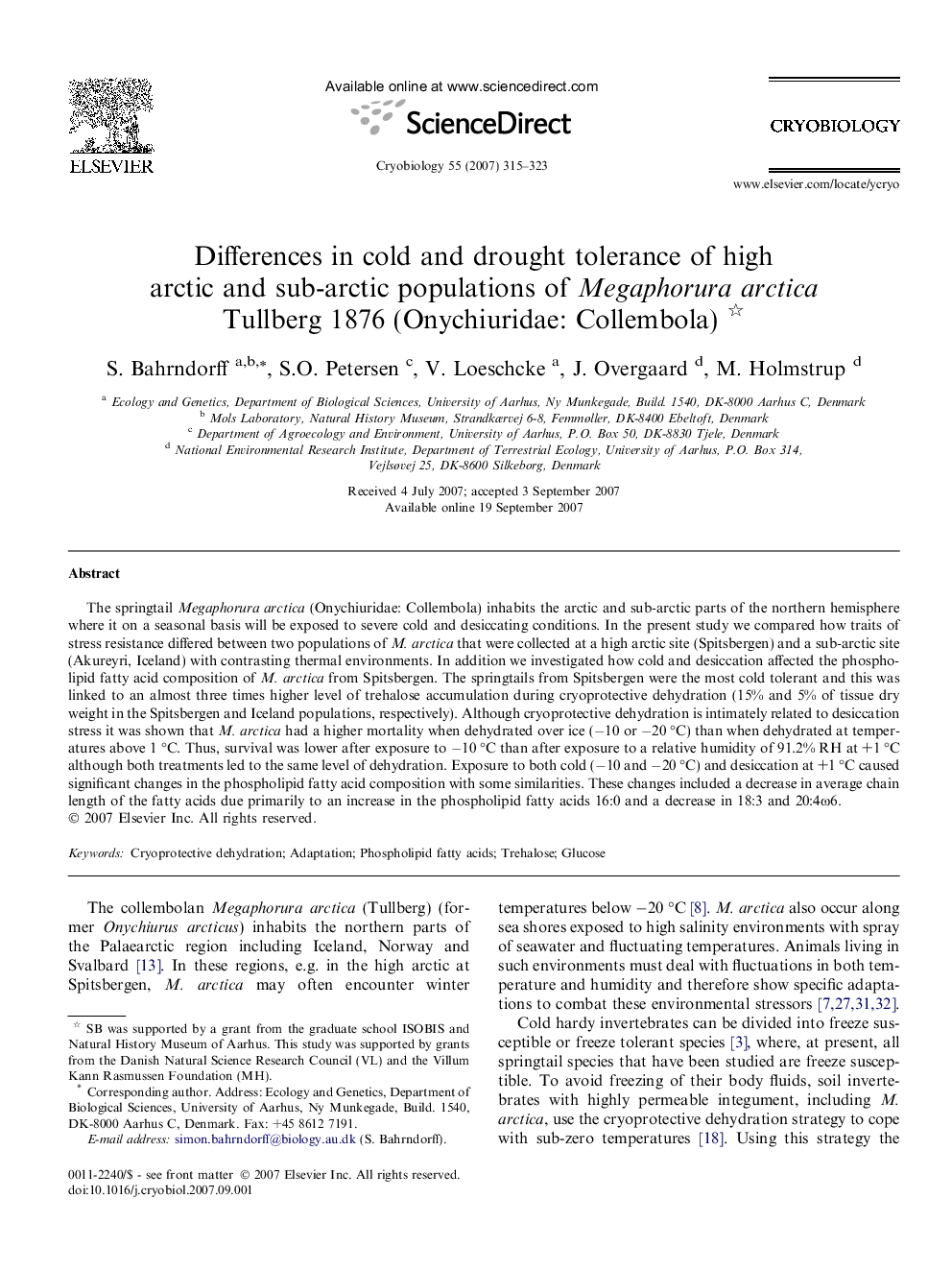| کد مقاله | کد نشریه | سال انتشار | مقاله انگلیسی | نسخه تمام متن |
|---|---|---|---|---|
| 2169338 | 1092937 | 2007 | 9 صفحه PDF | دانلود رایگان |
عنوان انگلیسی مقاله ISI
Differences in cold and drought tolerance of high arctic and sub-arctic populations of Megaphorura arctica Tullberg 1876 (Onychiuridae: Collembola)
دانلود مقاله + سفارش ترجمه
دانلود مقاله ISI انگلیسی
رایگان برای ایرانیان
کلمات کلیدی
موضوعات مرتبط
علوم زیستی و بیوفناوری
علوم کشاورزی و بیولوژیک
علوم کشاورزی و بیولوژیک (عمومی)
پیش نمایش صفحه اول مقاله

چکیده انگلیسی
The springtail Megaphorura arctica (Onychiuridae: Collembola) inhabits the arctic and sub-arctic parts of the northern hemisphere where it on a seasonal basis will be exposed to severe cold and desiccating conditions. In the present study we compared how traits of stress resistance differed between two populations of M. arctica that were collected at a high arctic site (Spitsbergen) and a sub-arctic site (Akureyri, Iceland) with contrasting thermal environments. In addition we investigated how cold and desiccation affected the phospholipid fatty acid composition of M. arctica from Spitsbergen. The springtails from Spitsbergen were the most cold tolerant and this was linked to an almost three times higher level of trehalose accumulation during cryoprotective dehydration (15% and 5% of tissue dry weight in the Spitsbergen and Iceland populations, respectively). Although cryoprotective dehydration is intimately related to desiccation stress it was shown that M. arctica had a higher mortality when dehydrated over ice (â10 or â20 °C) than when dehydrated at temperatures above 1 °C. Thus, survival was lower after exposure to â10 °C than after exposure to a relative humidity of 91.2% RH at +1 °C although both treatments led to the same level of dehydration. Exposure to both cold (â10 and â20 °C) and desiccation at +1 °C caused significant changes in the phospholipid fatty acid composition with some similarities. These changes included a decrease in average chain length of the fatty acids due primarily to an increase in the phospholipid fatty acids 16:0 and a decrease in 18:3 and 20:4Ï6.
ناشر
Database: Elsevier - ScienceDirect (ساینس دایرکت)
Journal: Cryobiology - Volume 55, Issue 3, December 2007, Pages 315-323
Journal: Cryobiology - Volume 55, Issue 3, December 2007, Pages 315-323
نویسندگان
S. Bahrndorff, S.O. Petersen, V. Loeschcke, J. Overgaard, M. Holmstrup,